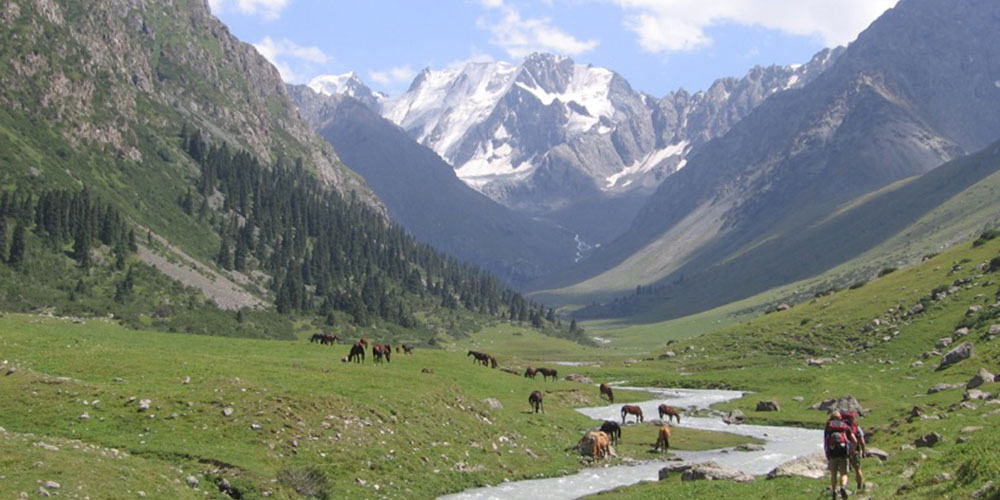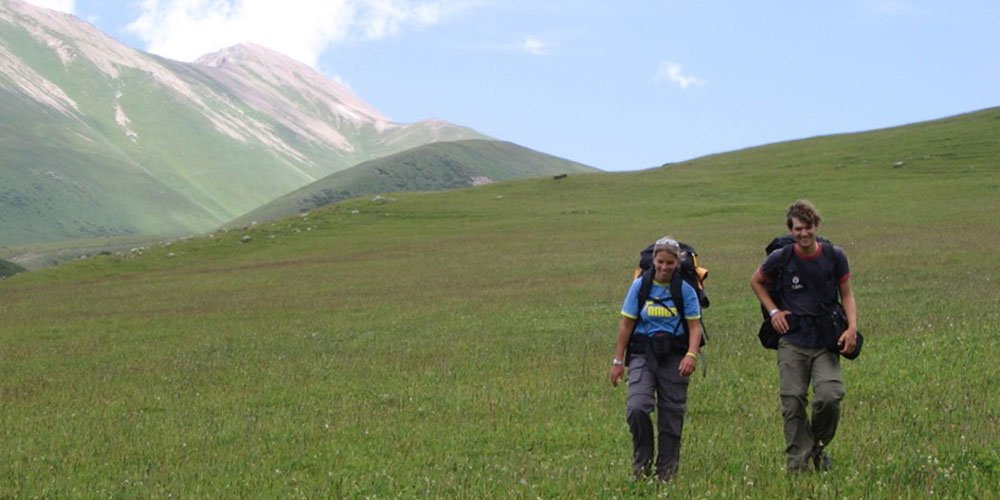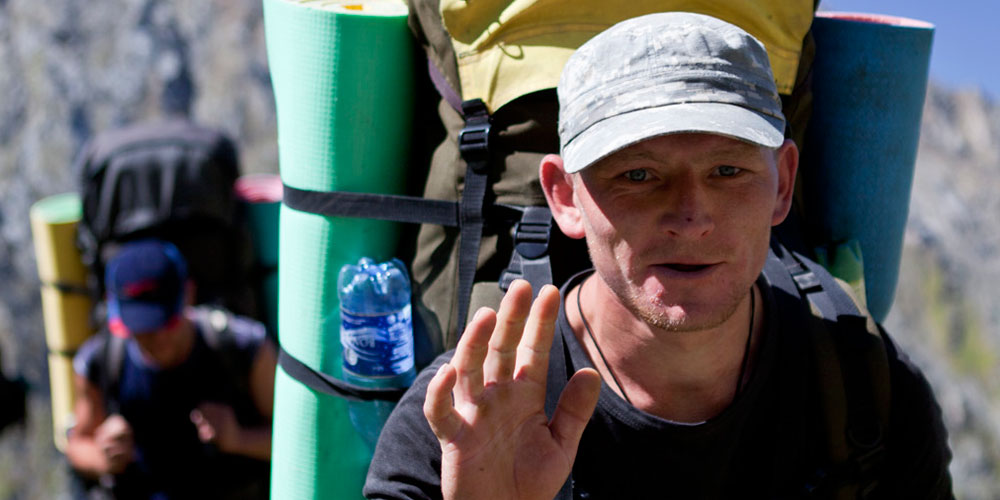| FAQ (Frequently Asked Questions) |
What type of payment method do you accept?
Do you accommodate special dietary needs?
How long is the trekking season in kyrgyzstan?
What happens in the case of extreme weather conditions?
How long is the trekking day?
What equipment is supplied?
What Altitude will I be trekking at?
How much snow should I expect on the slopes?
What is the best time for Heli-Skiing/Boarding in Kyrgyzstan?
What about transportation? How do we get to the mountains?
Where we stay on trek?
What is food like on trek?
Who will accompany us on trek?
What you do in case of emergency or other health issues?
Are there any wild animals or snakes we should be aware of?
What I have to bring with me?
Personal:
- Passport
- All appropriate trekking clothing
- Sunscreen, your favorite book, music, a journal, and don't forget the camera!
- If you'd like, favorite "Energy Snacks" and sweets from home.
Equipment:
Guests are required to have all appropriate equipment:
- Sleeping bag
- Sleeping mat
- All appropriate trekking clothing
- Hat and Gloves
- Sun Hat, Sunglasses, Sun cream
- Hiking boots
- Sandals
- Waterproof jacket and pants
- Gaiters
- Flashlight/torch, batteries.
- Snacks
- Water canteen
- Walking/trekking poles
- First Aid kit
- Washing and other utensils
- Daypack
Some of the equipment can be bought or rented in Bishkek. More information about what to bring.
What type of payment method do you accept?
We do accept bank transfers and cash.
Do you accommodate special dietary needs?
Our cooks will accommodate most of special dietary needs. Please let us knoe about your meal preferences at the time of booking.
How long is the trekking season?
Trekking season in Kyrgyzstan starts in mid June and lasts until October and longer but fall conditions can happen after that time. Treks in lowlands may start from June but every other time it would depend on snow conditions up in the mountains.
What happens in the case of extreme weather conditions?
Nasty weather may bring the change into the itinerary. We may decide to wait till the proper weather conditions or change the itinerary. Weather is one of aspect of your trekking holiday we absolutely have no control over.
How long is the trekking day ?
Typical day:
Breakfast served 7:30 AM - 8:15 AM
Departure 9:00 AM
Lunch is served between 12:00 and 14:00 in the field
Dinner 19:00
What equipment is supplied?
Tents, Kitchen utensils. Sleeping mats are provided on requests. Guests are required to bring their own personal trekking clothing and equipment.
What Altitude will I be trekking at?
Mostly we trek between 2000 m and 3800 m above sea level. Some treks go over the passes above 4000 metres but for short periods only (within several hrs enough to go over the pass).
How much snow should I expect on the slopes?
We mostly trek in green zone: at or above tree line. Only northern slopes of the passes might have all year round snow fields on short sections. If you trek early or late in the season spring or fall conditions may apply. Every other season the situation can slightly change. In May-June on northern slopes of the passes snow level ranges from 0,5 m to 1m, same place in July-August might have no evidence it was 1 meter snow filed sometime ago. In late October, November fresh snow level may reach 0,3 m - 0,5 m.
What is the best time for trekking in Kyrgyzstan?
Trekking season in Kyrgyzstan starts in mid June and lasts till October. The best trekking time is July-September. This is the time of the most optimal temperatures and weather conditions for pleasant trekking in Tien Shan and Pamir mountains.
How do we get in to the mountains?
It very much depends on the tour your purchased. Some trekking routes have
an easy access from paved roads and that case we will be using comfortable aircon
vans to deliver you to the start point. Some treks require approached by mountain
roads winding thru fir tree forests and along crystal clear mountain rivers
– that case we use 4WD or 6WD army tracks.
Where we stay in trek?
For all our treks we use Russia’s made high altitude Red Fox Explorer
tents. If your itinerary requires long approaches we may stay in the hotels
along the way. More
details about our tents.
What is food like on trek?
The food on Fantastic Asia treks is pretty much the similar you would have
at homes. No dehydrated or GM food is used.
Breakfast includes: bread, corn flakes, muesli, butter, sometimes French bread, porridge, rice pudding or cream of wheat. Tea, Coffee.
Lunch includes: sandwiches and other snacks: canned fish, fresh vegetables, pastes, bread, dry fruits and chocolate, accompanied by hot tea or coffee.
Dinner includes one or two vegetable salads, one hot course, bread, canned fish or paste, vegetables as well as sweets, dry fruits, chocolate and tea or coffee.
Snacks we supply plenty of chocolate, dry fruits, nuts, candies, biscuits etc.
Who will accompany us on trek?
Trekking crew includes guide, cook and porters to carry trekking equipment
and camping gear. You are allowed to provide 10-12 kg of your personal belongings
for porters to carry; you are also able to hire extra porter. We do not
use animals for the entire trek due to the relief conditions.
What you do in case of emergency or other health issues?
All our guides carry first aid kit and can handle with all minor health problems. For urgent issues guides carry satellite phones to call the office in case of emergency. For all our treks we require guests to have health insurance that would cover medical evacuation charges in case of emergency for 15.000 Euro. If help is urgently wanted we send helicopter to pick the sick person up and deliver to the hospital.
Are there any wild animals or snakes we should be aware of?
There are plenty of wild life in Tien Shan and Pamir mountains, but none of them threaten the trekkers. Most of wild life prefer to stay aside from trekking routes though we often see wild goats, foxes, marmots, rabbits. Snakes are not a problem in Kyrgyzstan and mainly do not inhabit areas higher 1500-2000 metres above sea level which is very much below the areas where we trek.













